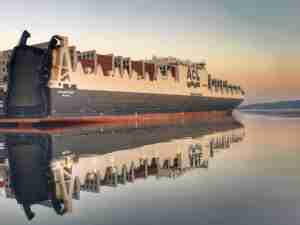By Karen E. Thuermer, AJOT
Festivities marking the 400th anniversary of the Jamestown Settlement demonstrate Virginia's long tradition of international trade and business. In fact, part of the Jamestown celebrations center on the fact the Commonwealth was founded as a foreign-owned business in 1607.
Today, the Commonwealth continues this tradition by offering a unique combination of assets that draw businesses in and helps them prosper. In fact, today more than 700 foreign-affiliated firms are located in Virginia. Promoting this commerce is the Port of Virginia. Consequently, the Commonwealth has benefited by attracting scores of related development.
'The Port of Virginia has become a true economic force that touches all corners of our Commonwealth,' said J. Robert Bray, prior to his retiring as the Virginia Port Authority's (VPA) executive director.
One only has to look at the millions of dollars being invested throughout the Commonwealth in distribution centers (DCs) and warehouses to understand the connection. Feeding those facilities is the seaport, which is posting all time records for cargo handled. In 2006, more than two million teus traversed its docks, with volume expected to grow four percent in 2007. Those volumes are largely guaranteed by the fact more than 85% of the port's business is sewn up in 10-year contracts with steamship lines that haul the freight. Cargo coming in by way of Norfolk will also continue to escalate due to this year's opening of the APM Portsmouth Maersk Terminal, a private terminal that will handle about one million teus a year once fully operational. VPA is also expanding Norfolk International Terminals (NIT), and has plans for developing Craney Island, which is scheduled to open in 2017. (See related article.)
As a result of these developments, studies show the region will need as much as 60 million additional square feet of warehouse and distribution space by 2032 to handle the amount of commerce coming through these terminals. That's the year Craney Island is projected to be built out.
DEVELOPERS JUMP ON THE BANDWAGON
Seizing the opportunity, developers continue to jump on the bandwagon to build speculative warehouses that are attractive to shippers in need of DCs with good access to the port. Nearby, ProLogis is developing a new 34-acre, 130,800 square foot distribution center in Chesapeake for NYK Logistics. The site offers direct access to the seaport and will include more than 630 container/trailer stalls and approximately 10,000 square feet of office space. It will be used as a deconsolidation facility for Target.
Dana Corporation has leased 80,000 square feet, and Capital Lightning & Supply is taking 30,000 square feet of distribution space in the 130,000-square-foot Bridgeway Commerce Center I, one of three speculative warehouse/distribution buildings in Suffolk developed by Liberty Property Trust.
CHEP USA, a leader in pallet and plastic container pooling services, leased 21,000 square feet in Bridgeway Commerce Center III. Its global partners include Wal*Mart, Proctor & Gamble, SYSCO, Kelloggs, Kraft, Nestl', Ford and GM.
Meanwhile, Indian River Distribution Center offers 247,000-square-feet of new distribution space strategically located across the street from Ford Motor Company's Norfolk Assembly Plant. The project offers an internal Norfolk Southern rail loading dock. It is the first foray into Hampton Roads by developer Ashley Capital, a privately held industrial owner/developer based in New York.
Other projects include those by Devon Properties and American Port Services in Hampton, Johnson Development in Isle of Wight, another project in Suffolk by Liberty Property Trust, as well as DCs for Massimo Zanetti Beverage in Portsmouth and Flexa Furniture in Suffolk.
ALLIANCE REDUX
But the area may have not seen anything yet if Isle of Wight and Suffolk Counties give consideration to VPA suggestions regarding rezoning









